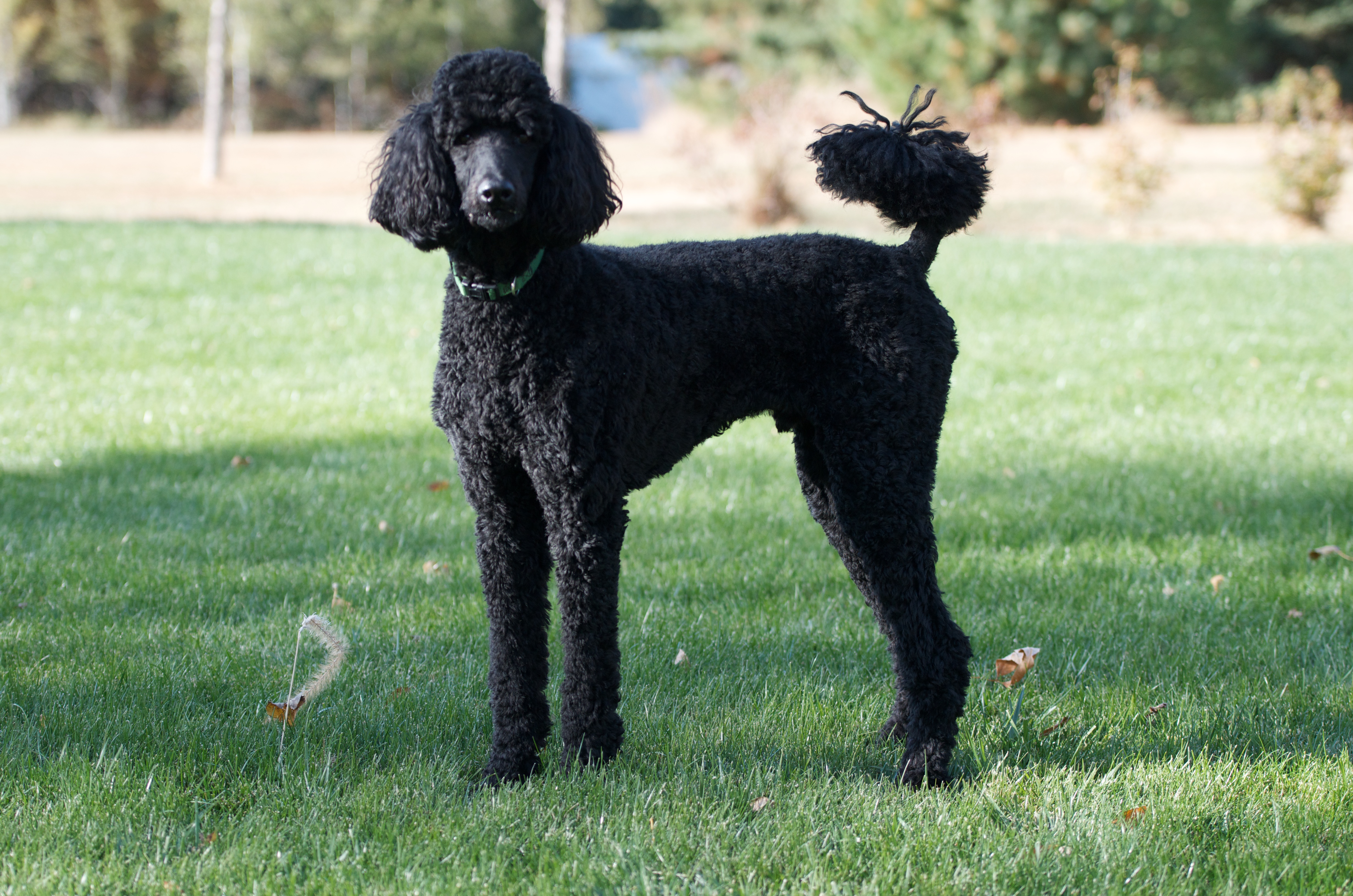The poodle, with its elegant appearance and intelligent nature, has been a beloved breed for centuries. However, there is a growing concern about the future of these graceful dogs. Are poodles going extinct? This question has sparked debates and discussions among dog lovers and experts alike.
Poodles have a rich history dating back hundreds of years. Originating in Germany, these dogs were initially bred as water retrievers. Over time, they gained popularity as companion animals due to their loyalty and hypoallergenic coat. Despite their long-standing presence in the dog world, poodles are facing some challenges that could impact their survival. According to recent statistics, poodle registrations have been on a decline in certain regions, raising concerns about their future.
While there is no evidence to suggest that poodles are going extinct, it is important to note that the availability of any dog breed can fluctuate over time. Poodles continue to be popular pets and are bred by reputable breeders. It is crucial to support responsible breeding practices to ensure the preservation of this beloved breed.

The Future of Poodles: A Closer Look at their Population
Poodles are one of the most popular and recognizable dog breeds in the world. Known for their elegant appearance and intelligence, these dogs have captured the hearts of many pet lovers. But with changes in the environment and human impact on their habitats, concerns about the future of poodles and their potential extinction have arisen. In this article, we will explore the current status of poodles and the factors that contribute to their survival as a species.
The Current Population of Poodles
Poodles come in three different sizes: standard, miniature, and toy. Each size has its own characteristics, but all are descendants of the same breed. Despite their popularity, the poodle population is not at risk of extinction. According to the American Kennel Club (AKC), poodles have consistently ranked among the top 10 most popular dog breeds in the United States for many years. This indicates that there is still a significant demand and breeding program for poodles.
Additionally, poodles are also bred for various purposes, such as show dogs, working dogs, and family pets. This diversity in their roles and purposes helps to ensure their continued existence. Breeders carefully select and breed poodles to maintain their unique traits and characteristics. This selective breeding process helps to prevent any decline in their population and preserves their genetic diversity.
Furthermore, poodles are not limited to one specific geographical region or climate. They can adapt well to different environments, making them a versatile breed that can thrive in various conditions. This adaptability contributes to their resilience and ability to survive in different parts of the world.
Conservation Efforts and Protecting Poodles
While poodles are not currently facing the threat of extinction, there are still important measures in place to protect the breed and ensure their well-being. Responsible breeding practices are essential to maintaining the health and longevity of poodles. Breeders follow guidelines set by kennel clubs and breed standards to ensure that the breed’s unique characteristics and qualities are preserved.
Additionally, reputable breeders prioritize the health and welfare of poodles by conducting necessary health screenings and tests to detect and address any potential genetic issues. Regular veterinarian check-ups, proper nutrition, and exercise are also crucial in keeping poodles healthy and minimizing the risk of diseases.
Education and awareness about responsible pet ownership play a significant role in protecting poodles and other dog breeds. Promoting adoption rather than supporting puppy mills and addressing overpopulation through spaying and neutering programs are crucial steps in ensuring the overall well-being of poodles and the reduction of abandoned or unwanted dogs.
The Impact of Environmental Factors on Poodles
While poodles are adaptable and resilient, environmental factors can still affect their population. Climate change, habitat loss, and other ecological disruptions can have an impact on poodles and their overall well-being. For example, changes in temperature and weather patterns can alter their natural habitats and affect their breeding patterns or migration.
Additionally, deforestation and urbanization can lead to a loss of suitable habitats for poodles and other wildlife. This loss of habitat can disrupt their natural behavior and make it more challenging for them to find adequate food and shelter. It is crucial to address these environmental concerns and work towards sustainable practices to minimize the impact on poodles and other species.
Conclusion
In conclusion, poodles are not currently going extinct. Their popularity and versatility, combined with responsible breeding practices and conservation efforts, contribute to their continued existence as a breed. While they may face challenges due to environmental factors, proactive measures can help protect their habitats and ensure their long-term survival.
Poodle Population Statistics
| Year | Number of Registered Poodles (AKC) |
|---|---|
| 2010 | ~47,000 |
| 2015 | ~48,000 |
| 2020 | ~50,000 |
Key Takeaways: Are Poodles Going Extinct?
- Poodles are not going extinct; they are a popular breed of dog.
- There is a misconception that poodles are becoming less common, but this is not supported by data.
- Poodles are known for their intelligence and hypoallergenic coats.
- They come in three sizes: standard, miniature, and toy.
- Poodles have been popular for centuries and continue to be a beloved breed.
Frequently Asked Questions
Poodles are a popular breed of dog known for their intelligence and distinctive curly coat. However, concerns have been raised about the possibility of poodles going extinct. In this section, we will address some common questions regarding the status of poodles and their future.
1. What is the current population of poodles?
The exact population of poodles is difficult to determine, as it varies by region and there is no centralized data collection system. However, it is believed that poodles are still a relatively popular breed and have a stable population in many countries. They continue to be bred by responsible breeders and are often seen in dog shows and competitions.
While there might be fluctuations in popularity, especially with the rise of other trendy breeds, the overall population of poodles is not at a critical level that would suggest extinction. It is essential to collaborate with breeders, organizations, and enthusiasts to ensure the continued well-being of the breed.
2. Are there any efforts to conserve and protect poodles?
Yes, there are various efforts in place to conserve and protect poodles as a breed. Many national and international dog breeding organizations have dedicated breeding programs focused on maintaining the genetic diversity of poodles and promoting responsible breeding practices.
Breed-specific rescue organizations also play a vital role in rescuing and rehoming poodles in need. These organizations work tirelessly to rehabilitate and find loving homes for poodles that have been abandoned or neglected.
3. Are poodles prone to any health issues that could affect their survival?
Like any other breed, poodles have certain health issues that are more common within their genetic pool. These include conditions such as hip dysplasia, progressive retinal atrophy, and certain skin allergies. However, responsible breeding practices aim to minimize the occurrence of these issues through genetic testing and proper selection of breeding pairs.
By prioritizing the health and well-being of poodles through careful breeding, it helps ensure their long-term survival. Regular veterinary care and a good diet are also essential factors in maintaining the overall health of poodles.
4. Can crossbreeding with other breeds impact poodle populations?
Crossbreeding poodles with other breeds can happen intentionally or accidentally, leading to mixed-breed offspring. While crossbreeding can introduce new traits and characteristics, it may also dilute the specific qualities and traits that define a poodle.
However, crossbreeding is not a direct threat to poodle populations unless it becomes widespread and displaces purebred poodles. Responsible breeders maintain the purity of the breed by carefully selecting breeding pairs and preserving the unique characteristics that make poodles distinctive.
5. How can individuals contribute to the preservation of poodles?
There are several ways individuals can contribute to the preservation of poodles:
- Choose a reputable breeder who prioritizes the health and well-being of their poodles.
- Consider adoption from a breed-specific rescue organization.
- Support organizations and initiatives that promote responsible breeding and conservation efforts.
- Spread awareness about the importance of responsible pet ownership and the need to protect and preserve poodles as a breed.

Poodle Facts: 10 Interesting Things You Didn’t Know
In summary, poodles are not currently going extinct. While their numbers have declined in some areas, they are still a popular and widely bred breed.
Efforts are being made to preserve and protect poodles through responsible breeding and conservation programs. It is important to continue promoting awareness and responsible ownership to ensure the long-term survival of these beloved dogs.
